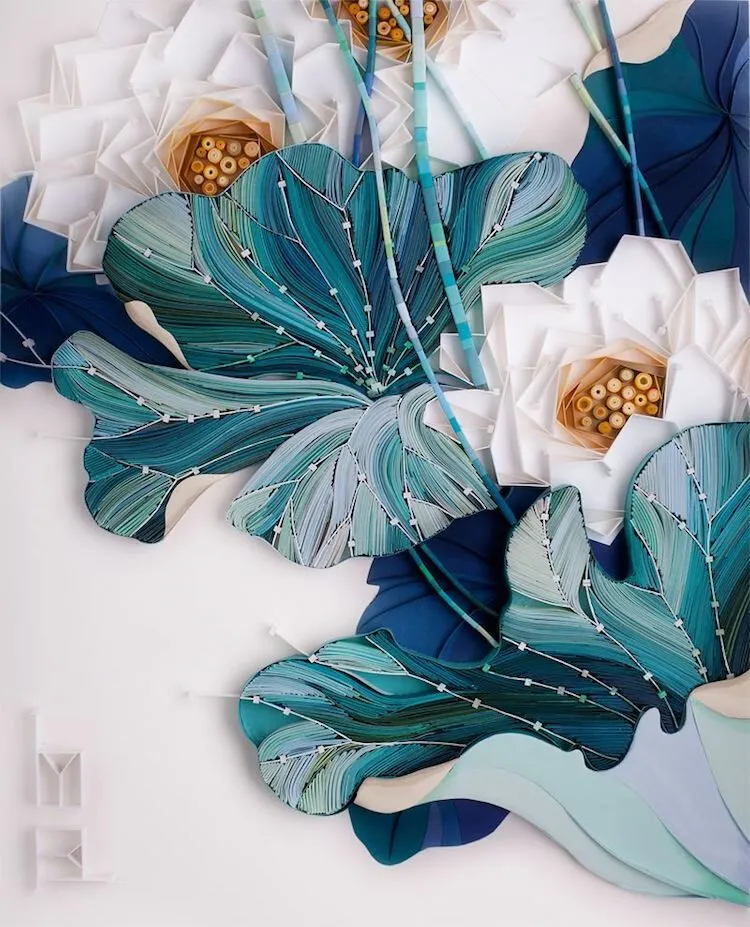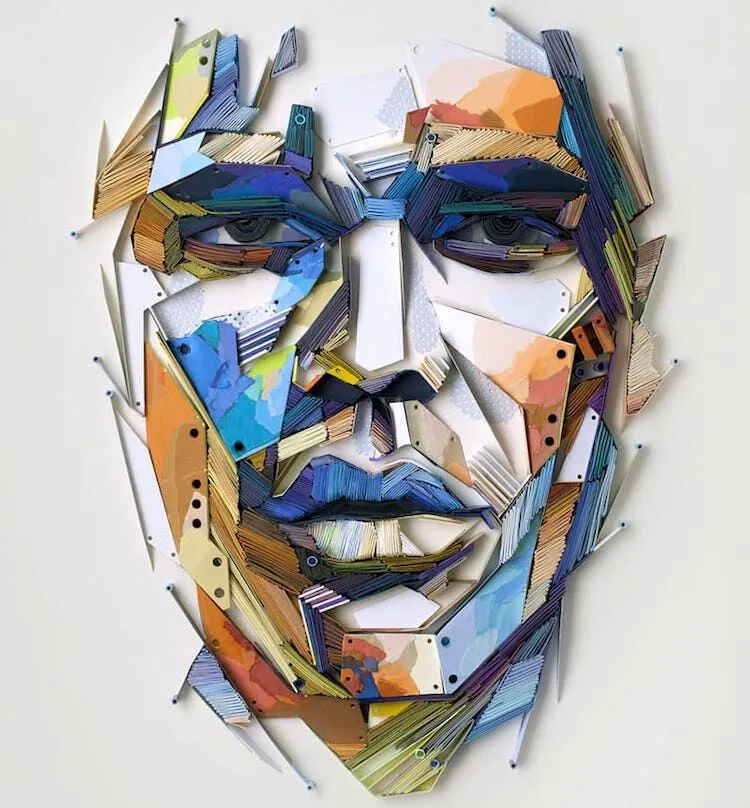The Origins of Paper Quilling
Paper quilling is an artistic process that involves rolling thin, colorful strips of paper into different shapes and arranging them to form a picture or an abstract pattern. The technique may sound simple, but once mastered, it can be used in versatile ways to create surprisingly intricate, detailed images. Exactly how versatile can this medium be? Take a lookie look!

Want to jump right into paper quilling? Check out our art box:

Check out these beautiful examples of paper quilling:
How have artists used paper quilling in the past?
As early as the 14th century, Monks and nuns sought to use this form of art in their churches to decorate holy objects, reliquaries, and icons.
Fun Fact: Creating their designs out of paper and then covering them with thin gold foil or paint would have allowed them to achieve the “look” of precious metal without the hefty price of solid gold! Sadly, over time, the gold foil known as “guilding” has chipped away along the edges of this panel to reveal a piece not in fact made of solid gold.
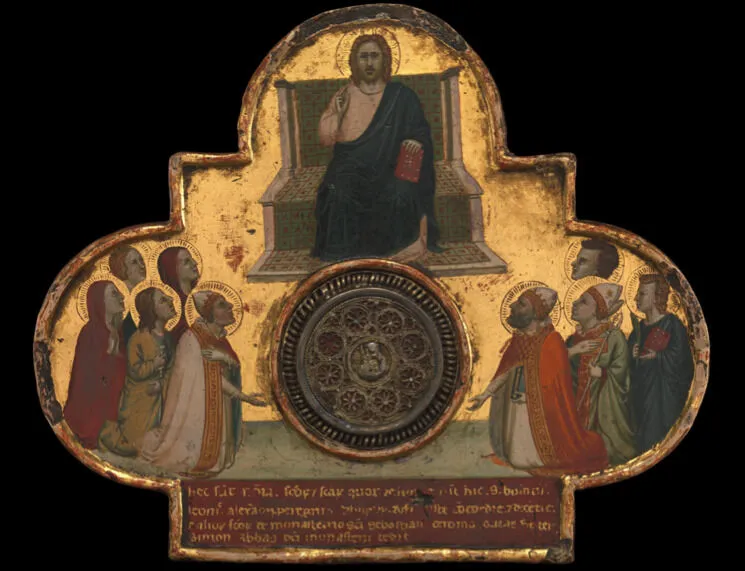
Bernardo Daddi, “Christ Enthroned with Saints”, around 1325. Metropolitan Museum of Art. The center of this painted panel contains delicate metalwork — the likes of which paper quilling could be used to imitate.
Mass production of paper
After paper started to become mass produced in England at the end of the 15th century, the appeal (and affordability) of paper quilling rose.
By the 17th century, paper quilling was no longer limited to religious settings. Paper quilling had become a popular craft, especially among young, upper-class women who had leisure time to dedicate to a hobby. Examples of paper quilling from the 17th, 18th, and 19th centuries can be found on frames, ink trays, cabinets and candlesticks.
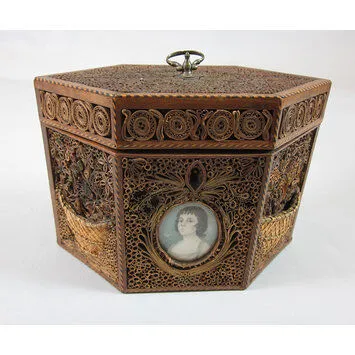
To see a few more examples of paper quilling during this time period, visit the online collection of London’s Victoria and Albert Museum.
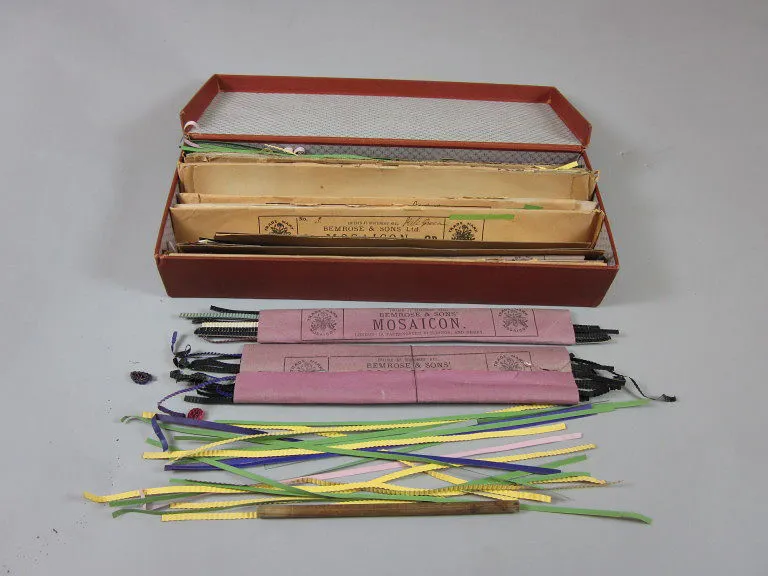
Right above is a paper quilling kit that was sold in England between 1870 and 1890. You can see that at the time, it was called a “Mosaicon” or paper mosaic. Over the years, paper quilling has had other names, too, including paper filigree, paper lace, and paper scroll.
How common is paper quilling today?
Today, this traditional technique is still alive and well. Hand-made as well as commercially produced greeting cards, scrapbooks, and even jewelry represent just some of the many contemporary uses of paper quilling. But, thanks to artists like Yulia Brodskaya, we can see that paper quilling continues to evolve as an artform. Through creative experimentation, Brodskaya is finding new ways to manipulate and arrange paper into extremely elaborate and surprising compositions!
Contemporary connections

Lisa Nilsson, “Gospel”, 2016
Lisa Nilsson is a visual artist who combines her interest in science and medicine with her mastery of the paper quilling process to create mesmerizing images of the human body. Hear her Ted talk*.
Discussion topics
- Why does Lisa Nilsson use paper quilling in her work? What does this technique allow her to do?
- The artist says that her works have been called both “beautiful” and “creepy.” What adjectives would you use to describe her art?
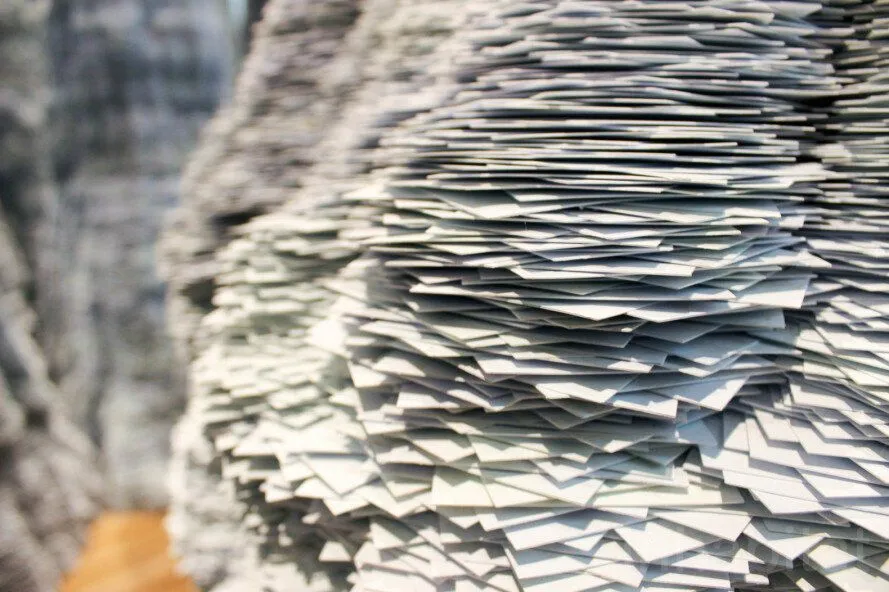
Tara Donovan, “Untitled,” 2014-2015.CreditCredit
Tara Donovan) is a mixed media artist and sculptor. She is known for transforming everyday materials, including paper, in ways that make them almost unrecognizable. The way she folds sheets and stacks sheets of paper and other flexible materials resembles paper quilling, only on a much larger scale. See a video about her work here
Discussion topics
-
Tara Donovan often does not give titles to her works. What reasons does she give for this practice? Do you agree that leaving a work untitled makes it more interesting? Why or why not?
-
The artist states that she likes to work like a scientist in a laboratory. What do you think she means by this?
Want further reading on paper quilling?
Where have you come across paper quilling? Share your inspirations in our Facebook group!
Written by Anna Rogulina
Want to read this offline? Feel free to print this post for offline reading!
